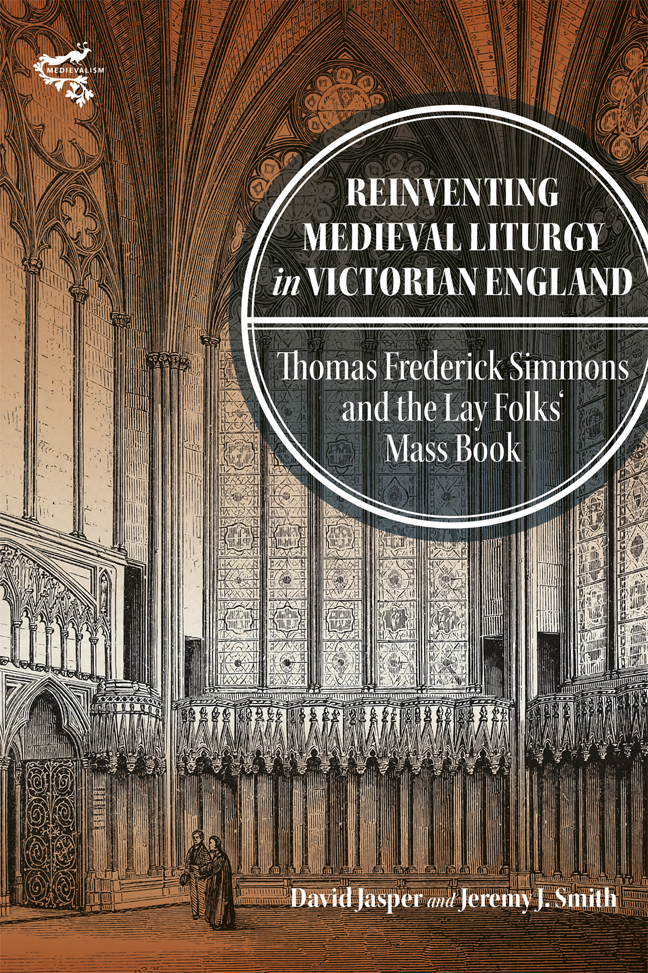 Reinventing Medieval Liturgy in Victorian England
Reinventing Medieval Liturgy in Victorian England Published online by Cambridge University Press: 02 March 2024
The Salisbury, or Sarum, ‘use’ was ‘the local modification of the Roman rite in use during the Middle Ages at the cathedral church of Salisbury’ (ODCC). Traditionally ascribed to St Osmund, Bishop of Salisbury (d.1099), it is, in fact, much later. By 1457 it was claimed that it was used in public worship throughout most of England, Wales and Ireland, and it furnished the primary material for the 1549 Book of Common Prayer. The most comprehensive modern edition of the ‘Use of Sarum’ (not including the Missal) remains that edited in two volumes by W. H. Frere in 1898 and 1901.
The purpose of this appendix is to illustrate many of the contentions of this book. The following parallel analysis of the LFMB and the Sarum Mass is, it has to be admitted, a necessarily artificial exercise. Simmons, it is true, linked the LFMB more closely with the York (Ebor) rite, since he was keen to make connexions between his Yorkshire parish and the usage of the metropolitan see, but the text aligns more closely in many ways to that of Salisbury (Sarum). Present-day indications of the provenance of versions of LFMB, however, show that it was circulated across a wide area of the north midlands as well as Yorkshire (see Appendix I).
Apart from Simmons’ edition of the LFMB we have deliberately used nineteenth-or early twentieth-century editions of the Sarum Missal in Latin and in English translation, as these texts were understood and revivified in the Victorian period. The LFMB is not, of course, a liturgical text as such, but rather a vernacular guide for those attending the Latin Mass.
Simmons, as we have seen, was perfectly well aware that this late medieval form of public worship should not be understood or viewed through the lens of the Anglican Book of Common Prayer. Nevertheless, in the context of Victorian medievalism and the Tractarian sense of the catholic continuity of the English Church, learned churchmen like Simmons, many of them devout parish priests, moved from the early Tractarian emphasis on doctrine to a growing and living sense of liturgy and later ritual.
To save this book to your Kindle, first ensure no-reply@cambridge.org is added to your Approved Personal Document E-mail List under your Personal Document Settings on the Manage Your Content and Devices page of your Amazon account. Then enter the ‘name’ part of your Kindle email address below. Find out more about saving to your Kindle.
Note you can select to save to either the @free.kindle.com or @kindle.com variations. ‘@free.kindle.com’ emails are free but can only be saved to your device when it is connected to wi-fi. ‘@kindle.com’ emails can be delivered even when you are not connected to wi-fi, but note that service fees apply.
Find out more about the Kindle Personal Document Service.
To save content items to your account, please confirm that you agree to abide by our usage policies. If this is the first time you use this feature, you will be asked to authorise Cambridge Core to connect with your account. Find out more about saving content to Dropbox.
To save content items to your account, please confirm that you agree to abide by our usage policies. If this is the first time you use this feature, you will be asked to authorise Cambridge Core to connect with your account. Find out more about saving content to Google Drive.